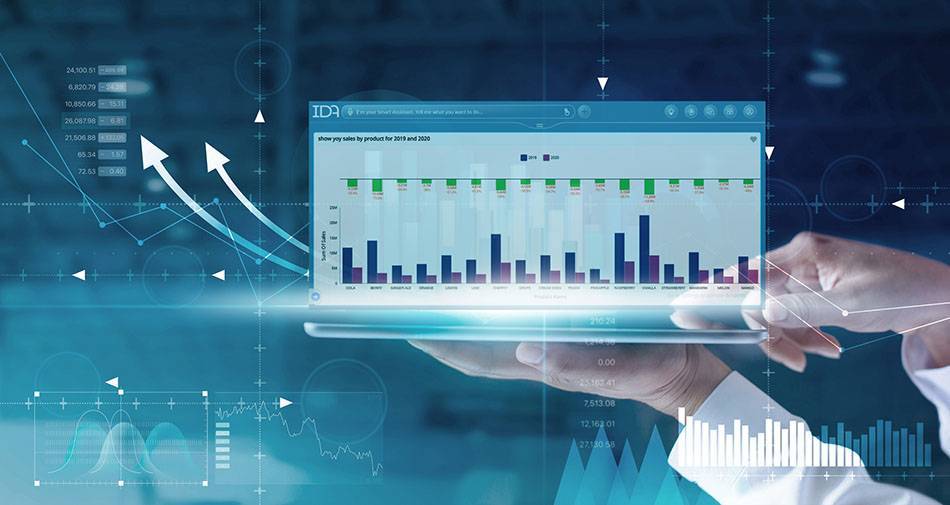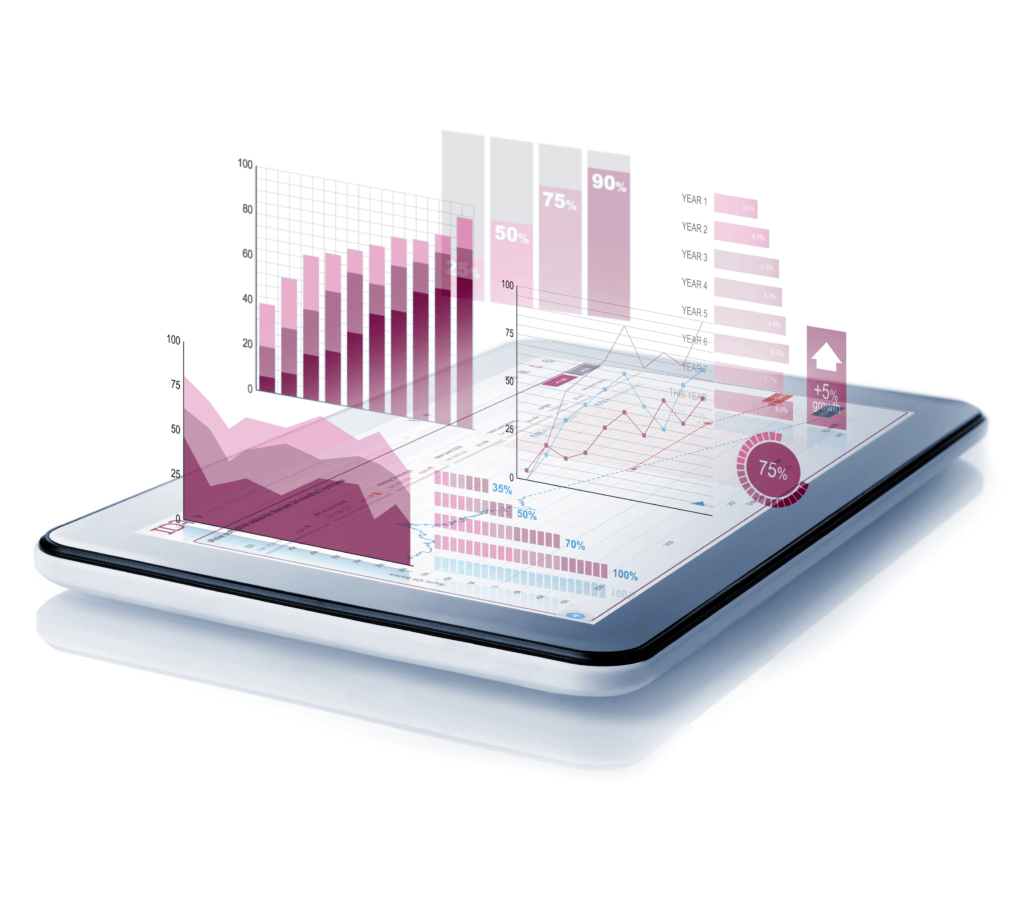Business Intelligence (BI) is the collection, analysis, and interpretation of data to provide information to decision-makers who can use this intelligence to make data-driven decisions about the problems and challenges facing a company. BI involves gathering, storing, cleansing, and processing large amounts of data in order to extract meaningful insights from it in a visual way.
BI dashboards provide companies with the ability to create highly formatted interactive dashboards that graphically depict business performance measures. They can include the ability to publish multi-object, linked reports, and parameters with intuitive and interactive displays. Dashboards often use visualization objects such as graphs, gauges, sliders, checkboxes, and maps that reveal the actual value of the measure compared to a goal or a target value. Dashboards can represent operational, strategic, and/or customer information.

They give company employees the ability to ask their own questions about their company’s data without having to rely on IT. Data visualization tools such as Business Objects, Qlik, Tableau, TIBCO’s Spotfire, and Visual Analytics have reusable metadata and semantic layers that let users navigate through available data sources, set and adjust predefined metrics, create hierarchies, and surface data into dashboards that make sense of complex data sets.
BI interactive visualizations allow users to explore data visually via the manipulation of charts, images, and objects, with the color, brightness, size, shape, and motion of visual objects representing different aspects of a dataset. These can include pie, bar, and line charts, heat maps, treemaps, waterfall charts, geographic maps, and scatter plots, as well as other special-purpose visuals and graphs.
Many BI dashboards have strong analytics capabilities that allow users to leverage an embedded statistical functions library that can consume common analytics methods such as Predictive Model Markup Language (PMML) and R-based models in the metadata layer then surface the model and analytics results into a dashboard.

in many ways, BI tools are a response to the explosion of Big Data, which refers to the massive amount of unstructured information being collected from various sources today, including social media sites such as Facebook or Twitter, along with clickstream browsing data and patron data collected on every purchase. The sheer volume of this Big Data information makes it difficult for businesses to manage their data effectively, let alone sift through the data to find patterns and correlations between various variables that can help the business make better operational, customer, or marketing decisions.
Big Data also enables businesses to analyze past records so that they can predict future outcomes based on historical trends that can give them a competitive edge over competitors who may not have access to this type of valuable insight into what works best when it comes time for planning out how things should be done next time around.
Tools such as Qlik, Tableau, Spotfire, and Visual Analytics can sift through mountains of data, then produce descriptive, diagnostic, predictive, and sometimes even prescriptive analytics in simple-to-understand dashboards. Predictive analytics refers to the use of advanced algorithms and statistical methods to help businesses make better decisions about their operations. It helps identify trends that can be used by a business to plan out how its resources should be utilized in the future to ensure the business retains a competitive advantage over other companies in its field.
Over the past decade, business intelligence has been embraced by software vendors and businesses alike. Powerful BI tools like Tableau, Qlik, Business Objects, Microsoft’s PowerBI, TIBCO’s Spotfire, and SAS’s Visual Analytics have simplified the data integration, data visualization, and data analytics processes. Data visualization involves creating charts and graphs which illustrate data in a way that makes it easier for people to digest and understand. It helps businesses identify trends that can be used for planning out how things should be done in the future so that they can achieve a competitive advantage over businesses in their space.

At its core, BI can help businesses transform their data into actionable intelligence that produces insights by using it to tell a story. Data-driven storytelling is a powerful tool as it puts stats and metrics into a narrative that anyone inside or outside of an organization can grasp. The fact that 90% of information humans process enters the brain visually explains why data presented in a visual dashboard can be so convincing.
The promise of BI is to enable decision-makers throughout an organization to explore data, draw insights, and create meaningful conclusions to make better business decisions. Traditional BI solutions have delivered reliable, operational data tied to pre-defined, static reports, but today’s real-time, analytics BI provides self-service, on-the-fly, a user-driven insight that businesses need to compete in today’s fast-paced, data-driven world.
